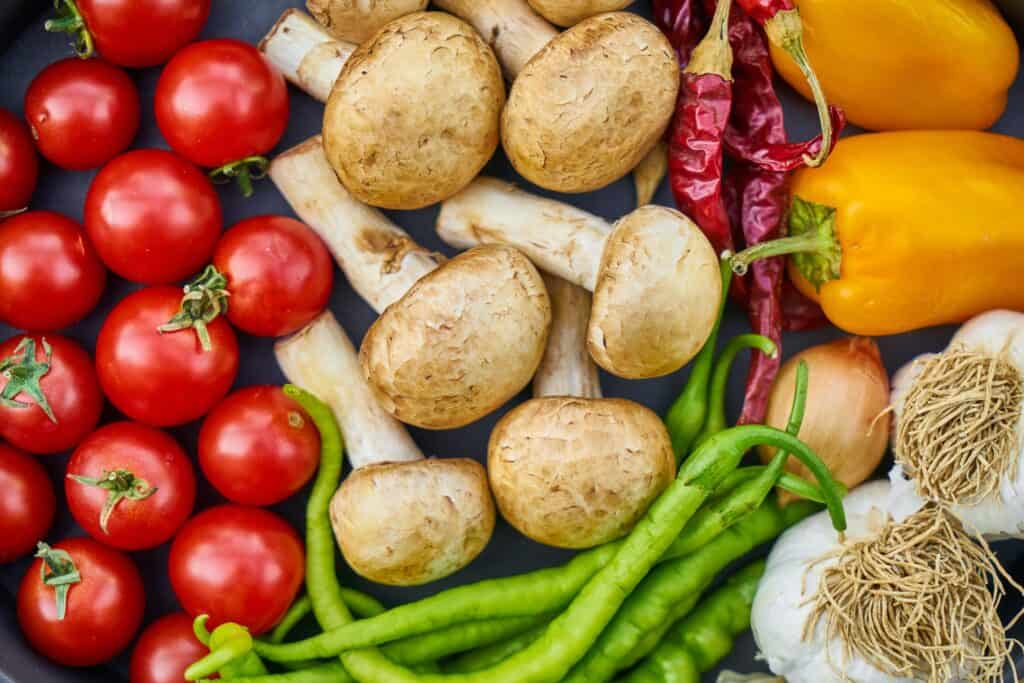In the world of healthier choices, plant-powered eating is in the spotlight. It’s not just a passing trend; it’s about making a lifestyle change for the better. More veggies in your diet mean more goodness for you and the planet. This blog is here to guide you with easy tips and cool ideas to make vegetables a bigger part of your meals. They won’t just be on the side; they’ll be the stars, making your meals tastier and healthier. So, let’s explore simple ways to enjoy more veggies every day.
Understanding the Benefits of Vegetables
Vegetables are nutritional powerhouses, packed with essential vitamins, minerals, and fiber, yet low in calories. Incorporating a diverse range of vegetables into your diet can significantly boost your intake of nutrients like potassium, dietary fiber, folate, and vitamins A and C. These nutrients are vital for maintaining good health, supporting everything from digestive health to immune function. A diet rich in vegetables can also lower the risk of chronic diseases such as heart disease, stroke, and certain cancers, making it a cornerstone of preventive healthcare.
Starting Your Day with Vegetables
While breakfast commonly revolves around cereals, bread, and eggs, it presents an excellent opportunity to incorporate a diverse range of vegetables. Begin your day with nourishing choices such as spinach or kale smoothies, vegetable omelets, or avocado toast adorned with sautéed tomatoes and peppers. Try experimenting with various flavors to keep things interesting and avoid monotony. Who knows, you might discover a newfound appreciation that diminishes any longing for processed deli meat. Breakfast can be great for exploring the vibrant and nutritious world of vegetables, transforming your morning meal into a wholesome and satisfying experience.
Reinventing Salads
Salads are often the first thing that comes to mind when thinking of vegetable dishes. However, they can be much more than just lettuce and dressing. Reinvent your salads by incorporating a variety of colors, textures, and flavors. Add roasted vegetables, fresh herbs, nuts, and seeds for added crunch and nutrition. A tasty cucumber salad, for example, can be elevated by adding cherry tomatoes, red onions, and a sprinkle of feta cheese, dressed with a lemon-herb vinaigrette. Such additions transform a simple salad into a delicious and satisfying meal.
Snacking Smart with Vegetables
Transform your snacking habits by incorporating more vegetables. Instead of reaching for chips or cookies, try crunchy carrot sticks, bell pepper slices, or cucumber rounds with hummus or yogurt dip. These snacks are not only satisfying but also provide a healthy dose of nutrients. Roasted chickpeas, kale chips, and edamame are other great options that pack both flavor and nutrition. Smart snacking with vegetables can help maintain energy levels throughout the day and prevent overeating during meals.
The Magic of Veggie-Based Soups and Stews
Soups and stews are excellent vehicles for a multitude of vegetables. They are not only comforting but also versatile, allowing you to use whatever vegetables you have on hand. From classic vegetable soup to more inventive dishes like butternut squash stew or broccoli-cheddar soup, the possibilities are endless. Soups and stews can be made in large batches and stored for quick and easy meals throughout the week. They are also perfect for sneaking in a variety of vegetables, making them ideal for those who are still warming up to the idea of plant-powered eating.
Vegetable-centric Main Courses
Moving beyond the notion of vegetables as mere side dishes, let’s explore making them the centerpiece of your meal. Vegetable-centric main courses are not only nutritious but can be incredibly satisfying. Think stuffed bell peppers, eggplant parmigiana, or a hearty vegetable stir-fry. These dishes provide ample room for creativity and experimentation with different flavors and textures. Another great idea is to transform traditional meat-based recipes into vegetable versions, like using portobello mushrooms in place of beef for burgers. This approach not only adds variety to your diet but also helps reduce meat consumption, benefiting both your health and the environment.
Grilling and Roasting for Flavor
Grilling and roasting bring out the natural sweetness and flavor of vegetables, making them more appealing, especially to those who might be hesitant to include more greens in their diet. Vegetables like zucchini, asparagus, and bell peppers become wonderfully flavorful and tender when grilled or roasted. Season them with herbs, spices, or a drizzle of olive oil to enhance their taste. These cooking methods are simple yet effective in transforming everyday vegetables into delicious components of your meal.
Integrating Vegetables into Traditional Dishes
Incorporating vegetables into dishes you already love is an effortless way to increase your vegetable intake. Add spinach to your lasagna, mix cauliflower with your mashed potatoes, or throw some diced vegetables into your pasta sauce. These subtle additions can significantly boost the nutritional value of your meals without compromising on taste. For instance, adding grated carrots or zucchini to meatloaf or burgers can enhance their moisture and flavor while upping your vegetable consumption.
Exploring International Vegetable Dishes
International cuisine offers a treasure trove of vegetable-based dishes that are both flavorful and nourishing. From the Mediterranean’s ratatouille to India’s vegetable curries and stir-fried veggies in Asian cuisine, there’s a vast array of dishes to explore. These meals often combine vegetables with rich spices and herbs, presenting an excellent opportunity to savor new flavors while reaping the health benefits of a plant-powered diet.
Making Vegetables Fun for the Whole Family
Encouraging the entire family, especially children, to eat more vegetables can be a challenge. The key is to make it fun and involve them in the process. Let kids help with preparing and cooking vegetable-based meals. Use cookie cutters to create fun shapes out of vegetables or challenge them to a ‘rainbow plate’ contest, where they assemble a dish with as many colored veggies as possible. These activities not only make vegetables more appealing but also teach valuable nutritional habits from a young age.
Conclusion
Including more vegetables into your diet is a journey of exploration, creativity, and enjoyment. Each of the tips provided in this article, from making vegetables the main course to experimenting with international dishes, offers a pathway to a more healthful and sustainable eating lifestyle. The key to a successful transition to plant-powered eating is variety and experimentation. It’s about finding joy in the textures, flavors, and nutritional benefits of vegetables. Whether it’s through a simple cucumber salad or a complex vegetable curry, every step towards more vegetable consumption is a step towards better health and a more balanced diet.






I love veggies especially grilled! Making fun vegetable filled salads for my family is a way I always get them excited to try more veggies!
I love this and I am for sure eating more and more veggies each day as they truly are good for you and it is a known fact that most people do not eat enough veggies each day. The minerals and vitamins that they provide ensure you feel your best!
I love this kinds of posts. It will help my food routine to be more healthy and I want a balanced diet also. Thanks for sharing this!